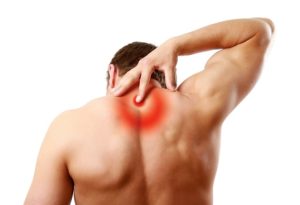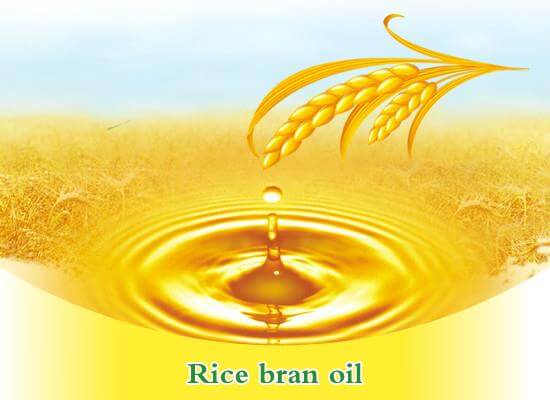
Overview:
Table of Contents
If you experience any kind of pain or discomfort in the back, usually from the shoulder blades or on the part where the rib cage and the chest are connected, then you are experiencing upper back pain.
Upper back pain is a condition that should never be taken for granted, especially if you are a frequent victim. When you experience this pain most of the time, you won’t be able to work normally due to pain.
This back pain can also make us feel more fatigued even when we did nothing strenuous at the moment. This is because it is located near the chest, giving pressure to your lungs, making you breathless when the pain attacks.
This is the reason why treating it is important. You can get relief from this pain through massage, especially if the pain is not severe. There are also medications for the relief of this back pain. You can also do some back exercises that are also effective in releasing the stress from your body and chest area. But these things are only effective for relieving if you can do it continuously for some days.
Things to Learn About Upper Back Pain:
Even if upper back pain is not necessarily a type of spinal disorder, it can still create tremendous pain and discomfort. Therefore, it is also beneficial that we learn about the causes of pain to prevent it from occurring.
The most usual causes of upper back pain deal with irritation in the muscles and dysfunction of the joints. Although very rare, it is also possible that the pain can be because of injury on a disc such as the degenerated disc or the thoracic herniated disc located in the upper back of our body.
It is crucial to remember that the thoracic spine is not similar in function and form with the lumbar spine or the cervical spine. The primary role of the lower back and the neck is to provide mobility to our body while the thoracic spine provides us with the stability and strength to stand upright and serves as a protection for our vital internal organs in our chest. Since the thoracic spine has great stability, but a limited movement; there is a minimum risk of having injury or degeneration in the upper back. In most cases, because of the lack of motion and stability anatomic causes of upper back pain can’t be established. CT scan or MRI scan will seldom image an anatomic concern that would need a surgical solution for the pain in the upper back.
Thoracic means the chest and thoracic spine cover the mid-back and upper back section of the spinal column that match up to the chest region. There are twelve vertebrae in the middle of our spine and ribs that compose the thoracic spine. The joints between the top lumbar vertebra and the bottom thoracic vertebra are the part that allows our body to twist from side to side.
Known Causes of Upper Back Pain:
Upper back pain can take place because of sudden injury or trauma, or it can appear through improper posture or strain. Often, this type of pain happens in association with shoulder and neck pain.
Muscular irritation:
Muscular irritation or myofascial pain occurs at the broad upper back muscles. These injuries are prone to being irritated that can be very painful and difficult to work out. More often than not, the pain at the upper back and muscular irritation are caused by either lack of strength or injuries because of overuse as in repetitive movements.
Sports injuries, muscle strains, vehicular accidents, or other injuries can all lead to pain due to muscular irritation. Manual treatments such as massage therapy, acupuncture, osteopathic manipulation, or passive physical therapy will not remedy this kind of upper back pain.
Since the pain in the upper back is in connection with the large muscles in the shoulder area, stretching and strength exercises will minimize the pain.
When you suffer from this pain, it is helpful to see an osteopathic physician, a chiropractor, or a physiatrist. If ever there is a particular point that is very soft, an active trigger point might cause the pain. Acupuncture, massage therapy, a trigger point injection or a combination of these can work to eliminate the pain in your upper back.
Joint dysfunction:
The ribs are connected to the vertebrae in the thoracic spine by two joints which connect with each side of your spine. Therefore, dysfunction in these two joints will lead to upper back pain. Manual manipulation is the usual treatment for this upper back pain. To help move the joint and minimize discomfort, you need to see a chiropractor, physical therapist, or an osteopathic doctor. Also, pain medicines can also help eradicate pain. My number one recommendation is to get an online program like this. If you follow the training, you can cure your back pain permanently.
Lifestyle factors:
Upper back pain may occur due to the certain factor in your lifestyle that Causes repeated stressing out one area of your neck. This factor includes:
- Not enough exercise or exercise with wrong techniques or over exercise
- Overweight or obesity
- Sitting for a long time with the wrong posture
- Some weight lifting also causes the upper back pain when made by the wrong technique
Symptoms of upper back pain:
The symptoms of upper back pain are quite similar to lower back pain. Sometimes we can’t even relish its symptoms are they are mostly not serious. The most common symptoms are:
- A dull, aching pain
- A headache
- A pain which spreads across the shoulder blades
- Muscle stiffness or tension
- Severe pain when lying on the bed
In rare cases, you may experience some serious symptoms which include:
- A weakness in the arms or legs
- Incontinence
- Numbness in the arms or legs
If you experience any of these symptoms then consult with your doctor immediately. You may like to read about clary sage essential oil health benefits.




More Stories
All you need to know about rice bran oil
12 medically proven health benefits of Berberis vulgaris
Ylang Ylang essential oil: Benefits, Uses, & Side Effects